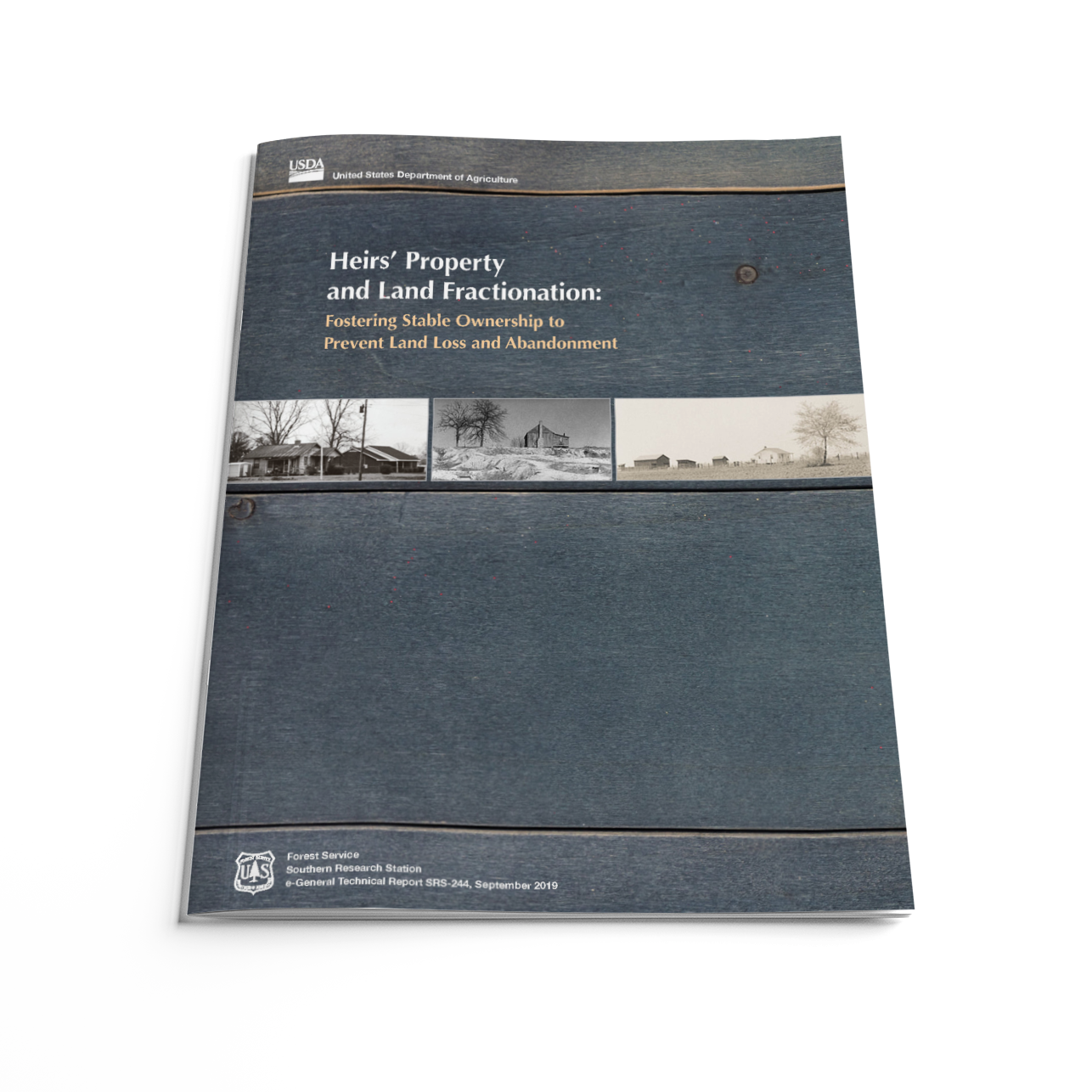
Heirs’ Property and Land Fractionation
Fostering Stable Ownership to Prevent Land Loss and Abandonment
Topic(s): State & Local Analysis
Published: September 2019
Geography: United States
Author(s): United States Department of Agriculture, Center for Community Progress,
Real property passed to subsequent generations via intestate succession (i.e., without a will) is termed a tenancy-in-common, or more colloquially, “heirs’ property.” Property may also be classed as heirs’ property via an intentional simple will that divides real estate assets equally among descendants. With this kind of property ownership, co-heirs hold fractional interests in property that is not physically divided. As such, heirs’ property represents a form of collective ownership. Owners are private property holders but are limited in their ability to use such properties to build wealth because creditors typically do not accept these properties as bona fide collateral. Heirs’ property ownership is thought to be especially prevalent among rural African Americans in the Black Belt South, Appalachian Whites, Hispanics in U.S. southwestern colonia communities, and Native American groups (as fractionated lands).
The U.S. Department of Agriculture Forest Service’s Southern Research Station and the Federal Reserve Bank of Atlanta hosted a gathering of heirs’ property researchers and direct legal service providers on June 15, 2017 in Atlanta, Georgia, with the aim to clarify problems associated with tenancies for these groups. The convening was organized into panels which addressed estimations of the extent of heirs’ property in the South, research on cultural aspects of heirs’ property ownership, and experiences of direct legal service providers, and included a discussion of how heirs’ property in urban areas contributes to abandoned and blighted buildings. Collaborators also worked to identify opportunities that would improve data collection, decrease property vulnerability, and better protect generational wealth. These proceedings include papers from many of the conference presenters as well as papers contributed by additional subject matter experts.
Topic(s): State & Local Analysis
Published: September 2019
Geography: United States
Related Publications
Other Related Content
Subscribe to join 14,000 community development leaders getting the latest resources from top experts on vacant property revitalization.
